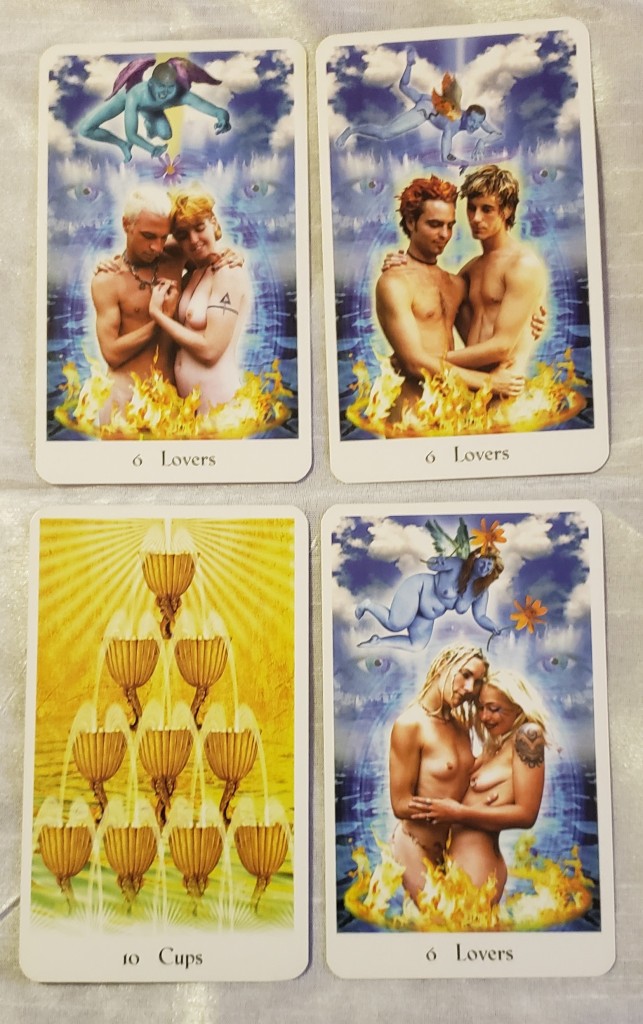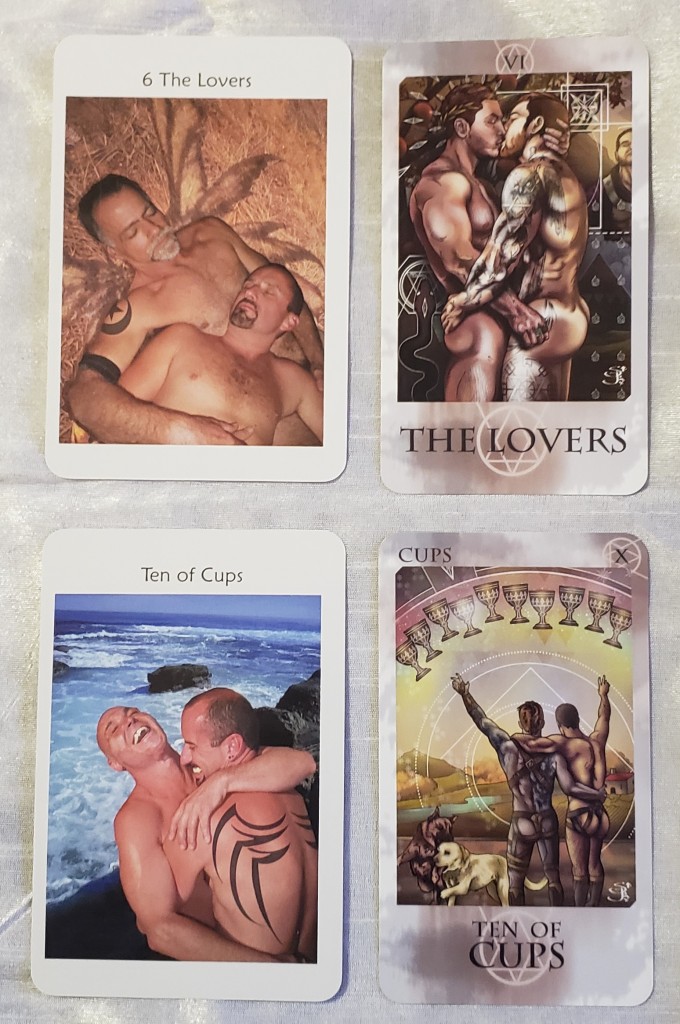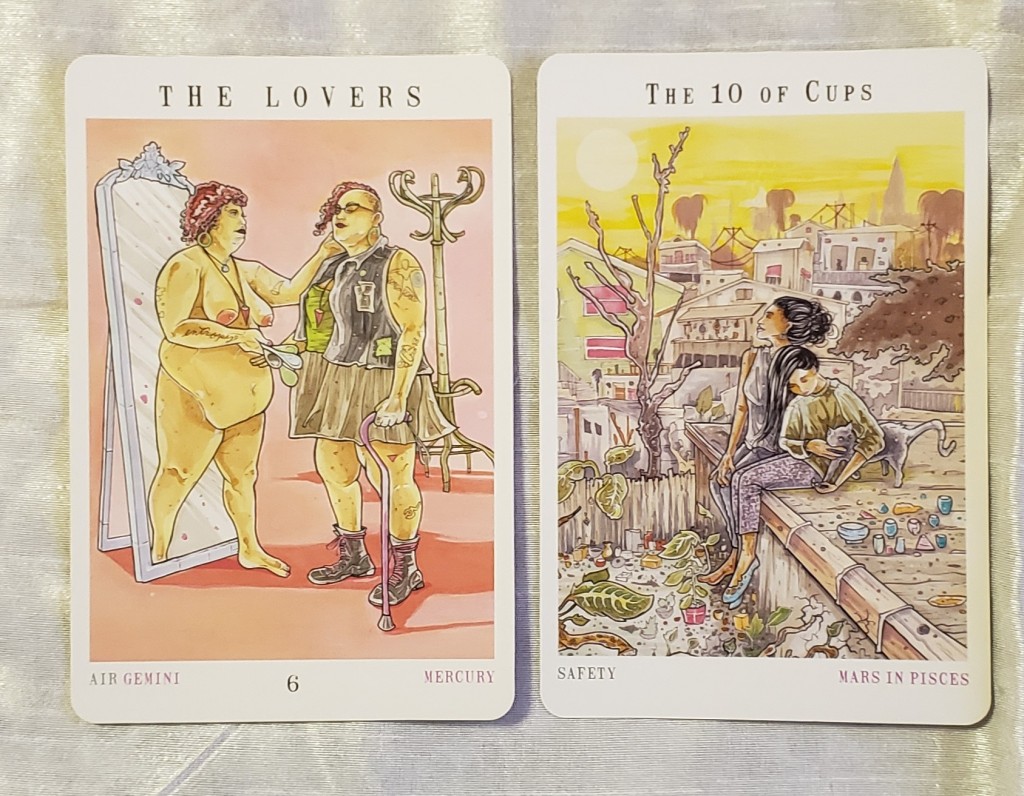
When I was growing up our choices of Tarot decks were primarily limited to the Waite-Smith deck and its direct clones. My grandmother gave me my Hoi Polloi Tarot the Christmas I was 12. I’d read every book about Tarot in the public library at least three times, so I knew about its deep roots in Western archetypes and Western mysticism. I learned to tell the stories uncovered in readings using what my friends and I fondly referred to as “the Cosmic Blue Pencil” (more about this in a future post). What I didn’t find in this deck was anything that spoke to me as a closeted gay teenager struggling with his sexuality.

As I grew older the variety of available decks increased. Artists and authors strove to reinterpret the Tarot in a variety of ways–witches, Wiccans, mythology enthusiasts, and more. While there were decks that had some gay sensibilities, I still struggled to see my stories in the Tarot, even as I learned to read for others and help them with their stories. Over the past 20 years there has been an explosion of available Tarot decks published by indepent artists and authors. I believe much of this movement is due to the artists’ and authors’ struggles to find themselves and their stories in the Tarot.


Eventually decks appeared that spoke more directly to me as a queer person and more specifically as a gay man. Yet I still had a hard time seeing myself in the “perfect” thin or athletic bodies. There has also been a growing awareness that the vast majority of Tarot decks available do not reflect the reality of the diverse world around me, including that of many of my clients. This situation is improving, but there is still a lot of work to do.

Probably the most diverse deck I own in terms of gender, people of color, body types, and more is Cristy C. Road’s Next World Tarot. It speaks to me in ways my other decks to not, but even so, I often have trouble seeing myself in this deck. Ultimately, no deck is perfect. Even designing my own deck would not produce a perfect tool for telling my story, or anyone else’s story. For years this frustrated me because so much of my work with Tarot is helping people discover, explore, live, and tell their own stories. There are ways to go deeper into the cards and see below the initial surface. Mary K. Greer’s 21 Ways to Read a Tarot Card shows a few ways to do that, but they really are just a jumping off point folks who aren’t straight, cis, or white. Not perfect, but I learned some important techniques to expand my understanding of the Tarot. By the time I read Cassandra Snow’s Queering the Tarot, I’d already learned on my own most of the techniques she presented, and some of her ideas did not resonate with me. Not perfect, but I learned things that expanded my understanding of the Tarot.
I had to learn that there is no perfect tool for telling our stories–Tarot or otherwise. Ultimately, I also had to learn that our stories are not perfect. What I’m left with is an imperfect tool for telling an imperfect story. Not perfect, but we live in an imperfect world, and what a tool for telling our stories.